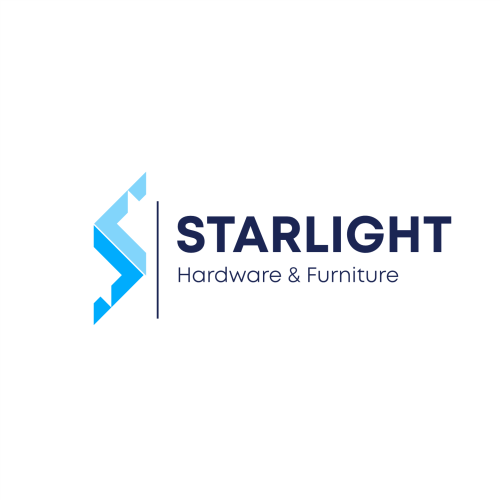Access control integration is redefining how building security is designed and managed. Installers who once handled separate door readers, camera feeds and alarm panels now face a wave of client requests for seamless connectivity across every system on site. Management platforms, environmental controls and visitor tools are all part of that demand, making integration both a major technical project and a key revenue driver.
Requests for combined security frameworks have grown sharply over the past few years. Facility leaders expect a single dashboard that locks down entry points, records camera clips and triggers alerts without juggling multiple applications. This shift brings tangible advantages for integrators, including:
- Meeting evolving client expectations: Clients want systems to “talk” to one another so they can see every event in one place. Teams that deliver on this promise often win new contracts and build longer relationships.
- Efficiency gains: A unified interface can cut redundant checks, speed up troubleshooting and reduce routine service visits.
- Standing out from the competition: Many firms still offer siloed installs. Expertise in cross-platform design positions an integrator as a one-stop security shop.
- Support for future growth: Platforms that share data easily can adapt to extra doors, new camera zones or advanced analytics without requiring a full overhaul.
Going beyond basic door entry points opens fresh possibilities. Key pairings include:
- Video surveillance: When a door is forced open or an unauthorized credential is used, an associated camera feed delivers instant proof and helps security teams piece together a sequence of events after the fact.
- Alarm systems: Valid badge swipes can disarm selected zones automatically, while holds-up and forced entries trigger real-time alerts to monitoring centers.
- Building management: Entry credentials can simultaneously switch on lights, adjust HVAC and tweak energy settings, cutting waste and creating a workspace that responds to actual usage.
- Visitor management: Pre-registered guests receive digital passes that simplify check-ins, trim lobby queues and give property staff clear visibility into guest volume and duration.
Each link adds measurable benefits for facility operators and boosts the integrator’s service profile. Delivering bundled solutions shifts a firm’s identity from hardware installer to trusted adviser. That change opens new work, from design consulting to ongoing support contracts and extended maintenance plans.
Achieving a successful project starts with a robust design phase. Integrators should give priority to open frameworks that support industry protocols and public APIs. Whether linking controllers via OSDP or streaming video through ONVIF-compliant endpoints, open standards guard against vendor lock-in and let teams swap components as needs shift.
Security hardening is non-negotiable. Every integration point creates a pathway that could expose sensitive data or invite misuse. Staff must configure strong encryption, segment networks with firewalls and keep firmware up to date. A risk assessment at project kickoff helps pinpoint the areas that require extra controls or multi-factor checks.
Compatibility testing belongs in the lab before any hardware reaches the job site. Simulating typical user events and failure scenarios exposes mismatches in data formats, network handshakes or time stamps. Resolving those mismatches off-site speeds final turn-up and lowers the chance of unplanned downtime.
Even the most advanced systems can stumble if installation crews lack hands-on practice. Training that covers day-to-day workflows, emergency overrides and routine health-check procedures is vital. Workshops, video tutorials and step-by-step guides give technicians the confidence to manage complex integrations on the first try.
The business case for integration extends well beyond technical safeguards. A full package of access control, video, alarms and building management gives sales teams a competitive edge. Clients hunting for comprehensive solutions will pay premium rates for a single partner that can plan, build and maintain a unified environment.
Recurring revenue follows naturally. When multiple systems are connected, clients depend on a single integrator for system monitoring, software updates and preventive maintenance. From monthly health reports to annual security audits, these ongoing fees build a reliable profit stream and strengthen client loyalty.
Scalability is built in from day one. If a retailer opens another branch or a corporate campus adds a new wing, the original team understands the data flows, API endpoints and network requirements. That continuity accelerates expansion projects, drives down per-door costs and cements the installer’s role as a long-term technology partner.
Integration work does carry challenges. Aging equipment may lack modern interfaces, forcing the use of bridges or custom drivers. Conducting a thorough inventory of existing site assets—readers, control panels, switches and cameras—lowers front-end surprises and better informs design decisions.
Staff readiness can cause slowdowns if teams haven’t kept up with frequent platform updates or new vendor modules. A continuing training plan, complete with vendor certifications and refresher courses, keeps technicians sharp and ready for every aspect of integrated deployments.
Client onboarding demands clear communication. End users often assume that connecting systems brings every feature online instantly. Integrator teams must map out which functions are live at day one and which require later modules or software releases. That level of transparency helps maintain trust and sets realistic roadmaps for future enhancements.
Looking ahead, the integration field will track broader trends in IT and building services. Cloud-native platforms are now mainstream, giving integrators the ability to deploy virtual controllers, push software upgrades remotely and manage multiple locations through a web console. Reduced travel requirements and central log collection make ongoing support more efficient.
Smartphone access is soaring in popularity. Mobile credentials can use Bluetooth, NFC or QR codes to unlock doors, log a record and feed events into video logs and analytics engines. Beyond convenience, those digital workflows capture richer context—like dwell time, location histories and device health data.
Artificial intelligence and machine learning are making inroads, too. By feeding access logs and camera streams into AI engines, teams can spot unusual patterns—multiple badge reads in quick succession or tailgating events—and trigger automated lockdowns or alerts before an incident escalates.
Professionals who keep pace with emerging standards and product roadmaps will help clients reap the next set of gains. A proof-of-concept lab or demo suite gives property owners a hands-on sense of new workflows, from biometric door readers to AI-driven video search.
For those in the field of security integration, mastering access control connections is more than a technical skill. By melding door systems with cameras, alarms, visitor logistics and building management, providers can offer safeguards that are stronger, operations that are smoother and a partnership model that pays off year after year.
Success in this environment calls for a foundation built on open building blocks, hardened security settings and thorough knowledge transfer. Firms that equip their teams with these practices are well positioned to win projects, expand service offerings and forge lasting client relationships.



